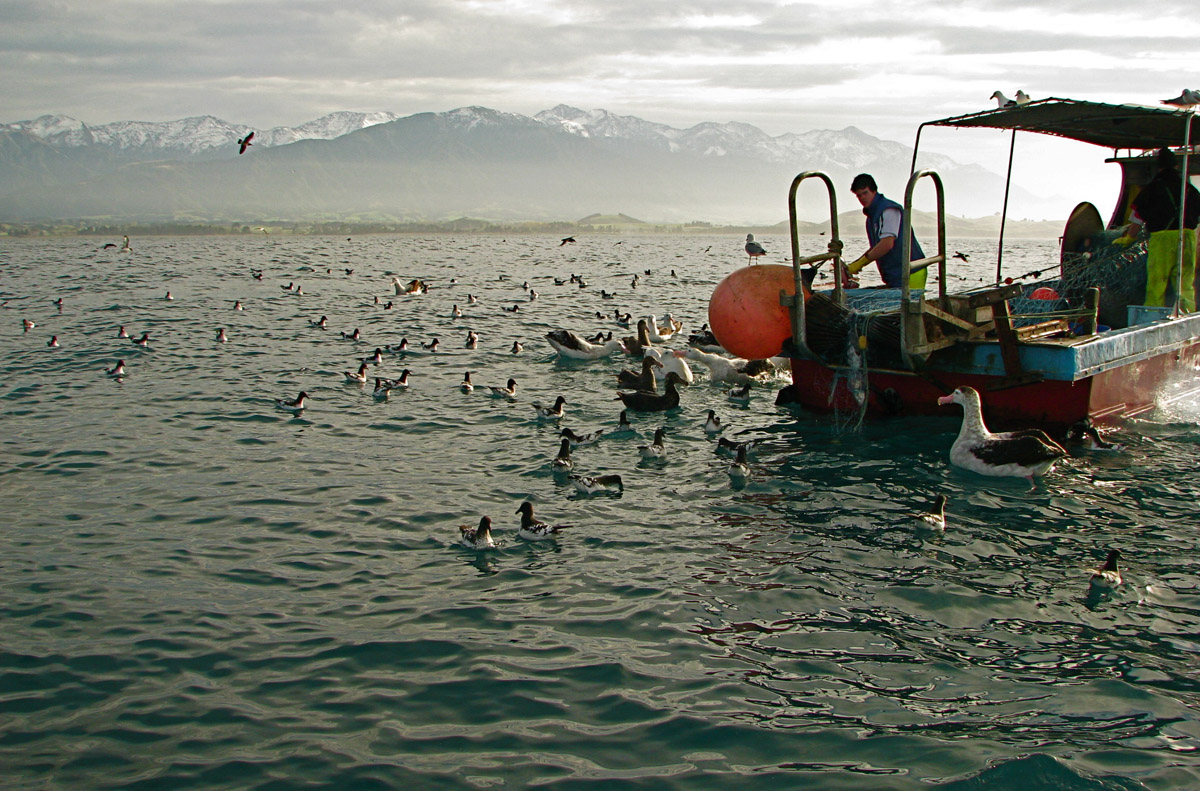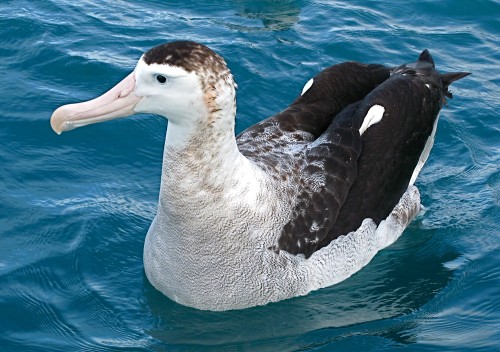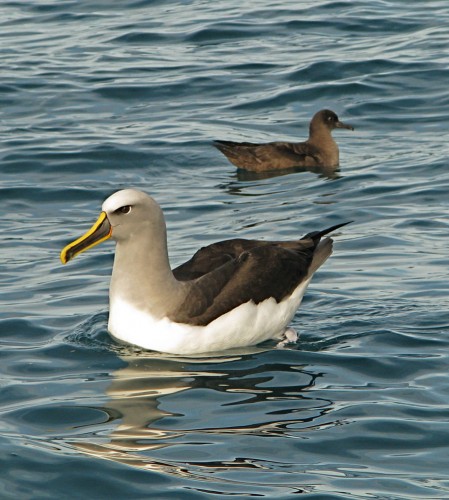Tubenoses, Albatross Elbows and Muttonbirds
One thing the Southern Hemisphere does well is sea birds. Albatrosses, gannets, penguins, prions, storm petrels, diving petrels, gadfly petrels, giant petrels, shearwaters, skuas, mollymawks, and more occur in baffling numbers of species (and nomenclature). Normally, many of these birds are found well out to sea, over the deepwater pelagic zones. But in tectonically active NZ, there are places where the continental shelf drops off into deep water quite close to shore — like at Kaikoura on the east-northeast coast of the South Island — and in those places you don’t need to venture far from the harbor for excellent seabird viewing.
The birds are accustomed to following fishing vessels, and close-up views are possible if you just chum a chunk of frozen fish-liver behind the boat. Above a gibbering mob of Pintados (Daption capense, Cape “pigeons”) is joined by Nellies (Macronectes spp, Giant Petrels) and a couple of species of Albatross to joust over gobbets of yummy chum off the back of a small net-fisherman.
 I’ve seen Albatross in Antarctic waters, sitting on the surface at a distance from the ship, or skimming adroitly behind the vessel, drafting over the huge waves of Drake’s Passage. They’re enormous birds — the largest Royals and Wanderers have a wingspan of nearly 12 feet (3.5 meters). A big wingspan means long wingbones, and when these wings are folded, they jut out behind the bird with a gawky elbowy effect, visible in the photo above of this Toroa, a youngish Wandering Albatross (Diomedea gibsoni). The “elbows” actually extend almost as far as the tips of the primary feathers, a characteristic I haven’t noticed in any other bird.
I’ve seen Albatross in Antarctic waters, sitting on the surface at a distance from the ship, or skimming adroitly behind the vessel, drafting over the huge waves of Drake’s Passage. They’re enormous birds — the largest Royals and Wanderers have a wingspan of nearly 12 feet (3.5 meters). A big wingspan means long wingbones, and when these wings are folded, they jut out behind the bird with a gawky elbowy effect, visible in the photo above of this Toroa, a youngish Wandering Albatross (Diomedea gibsoni). The “elbows” actually extend almost as far as the tips of the primary feathers, a characteristic I haven’t noticed in any other bird.
The petrels and albatrosses are Procellarids, or tube-noses: in other words, their nostrils are enclosed in one or two tubes along their strong, grooved, hooked bills, a trait visible in the photo above.
As puffins are still eaten in Iceland, some species of tubenoses are harvested for food in NZ. At this time of year, Māori are entitled to collect Muttonbird chicks (Titi, Sooty Shearwater, Puffinus griseus) from their nesting burrows in the coastal bush and mountains. (The adults have already headed out to the wintering grounds, some as far away as the waters off the coast of  California; the young are left behind to grow in their adult plumage.)
California; the young are left behind to grow in their adult plumage.)
Traditionally, cooked Titi were packed in their own fat in kelp bags, where they stayed fresh for 2 -3 years. I couldn’t find a picture of a poha-titi, a Māori kelp bag, but here’s a photo of a Titi (Sooty shearwater or muttonbird): it’s the smaller all-dark bird at the top of the picture. The large and handsome bird in the foreground is a Buller’s Mollymawk (Diomedea bulleri).
Nowadays Muttonbirding is largely a commercial enterprise, for sale to restaurants. Later in the trip we found contemporary Muttonbird on the menu of a very nice fish restaurant in Moeraki, but I chose blue cod, thinking of the bird we’d seen on the sea in Kaikoura.
(Photos, top: E. Shock: the snow-covered Kaikoura Mountains are visible in the background; middle, A. Shock; bottom, E. Shock. All from the Kaikoura pelagic trip.)
